


𝐅𝐚𝐬𝐡𝐢𝐨𝐧
[𝒻𝒶-𝓈𝒽𝓃] 𝓃𝑜𝓊𝓃.
𝚃𝚑𝚎 𝚊𝚛𝚝 𝚘𝚏 𝚜𝚑𝚘𝚠𝚌𝚊𝚜𝚒𝚗𝚐 𝚢𝚘𝚞𝚛 𝚘𝚠𝚗 𝚒𝚍𝚎𝚗𝚝𝚒𝚝𝚢 𝚊𝚗𝚍 𝚞𝚗𝚒𝚚𝚞𝚎𝚗𝚎𝚜𝚜 𝚝𝚑𝚛𝚘𝚞𝚐𝚑 𝚢𝚘𝚞𝚛 𝚌𝚕𝚘𝚝𝚑𝚒𝚗𝚐 𝚊𝚗𝚍 𝚊𝚌𝚌𝚎𝚜𝚜𝚘𝚛𝚒𝚎𝚜.
***
When I moved to the big apple, not once did I think or let alone anticipate that fashion and style would be at the centre of my New York experience and self-expression.
At the time I relocated to New York, I was a very busy entrepreneur; juggling academia and scaling my several startups – a quest that often left me with near no time to rest, let alone worry about my appearance. I did not really care for fashion. My style was reduced to deras for my typical days, and pantsuits for my professional engagements.
Arriving in New York City found me asking myself “Who are you going to be (in this big city)?” Relocating in a way gives you permission to start over. It is literally that – a new slate. You are in a place where nobody knows you, and you can decide for yourself who you are going to be.
When I hear of (or see on digital platforms) New York fashion, it seems very laid back. People wear casual clothing more often than not, and nearly everyone wears closed flat shoes.
I have always been a woman who wears high-heeled shoes, and though I understood my new reality (of walking, now away from the ‘luxuries’ of owning a car), I struggled grappling with the idea that I would have to now wear flat shoes. I tried, for a few weeks, but it just was not me, so in no time, I was buying heels again – testing my waters and finding what was comfortable.
For my 28th birthday, my new Zimbabwean friend, Chalenge, booked us a tour of the Brooklyn Museum, where the “Africa Fashion” exhibition is currently on display. I was not very excited about it, as I had not read much on it, and I had near no expectations. I should have been.
Home to one of the country’s most dynamic African diasporic communities, Brooklyn is the perfect setting to explore Africa’s many histories and cultures.
The Africa Fashion exhibition showcases a dazzling array of garments alongside music, visual art, and much more, Africa Fashion celebrates the ingenuity and global impact of African fashions from the 1950s to today.
Making its North American debut in Brooklyn, Africa Fashion is the largest-ever presentation of the subject: more than 180 works, including standout pieces from the Museum’s collections. Organized thematically, this multisensory experience features immersive displays of haute couture and ready-to-wear apparel, as well as photographs, literature, sketches, music, film and catwalk footage, textiles, and jewelry.
More than forty designers and artists from twenty African countries are represented, from the vanguards who first gained worldwide attention, such as Kofi Ansah (Ghana) and Shade Thomas-Fahm (Nigeria), to the newest generation of cutting-edge creatives, such as Thebe Magugu (South Africa) and Gouled Ahmed (Djibouti). Many of their works are on view for the first time in the United States.
The timing of the exhibit is of significance. The exhibit marks 100 years since the Brooklyn Museum became the first arts institution to showcase African art to North American audiences.
Visitors can participate by sharing contemporary photos and short videos via social media, which may be featured on the Brooklyn Museum’s channels.
These were my sentiments walking through the gallery – I felt like I was walking through different cultures at different times, but all at the same time.
As much of Africa won independence in the mid-twentieth century, a wave of liberated creative expression swept across the continent—and its evolution hasn’t stopped since.
African fashion is as old as the continent itself, with a history that dates back thousands of years. Each region and ethnic group within Africa has its own distinct clothing traditions, often influenced by climate, resources, and cultural beliefs. From the colorful kente cloth of West Africa to the flowing robes of the Maasai in East Africa, these garments have deep cultural significance and have been worn for centuries.
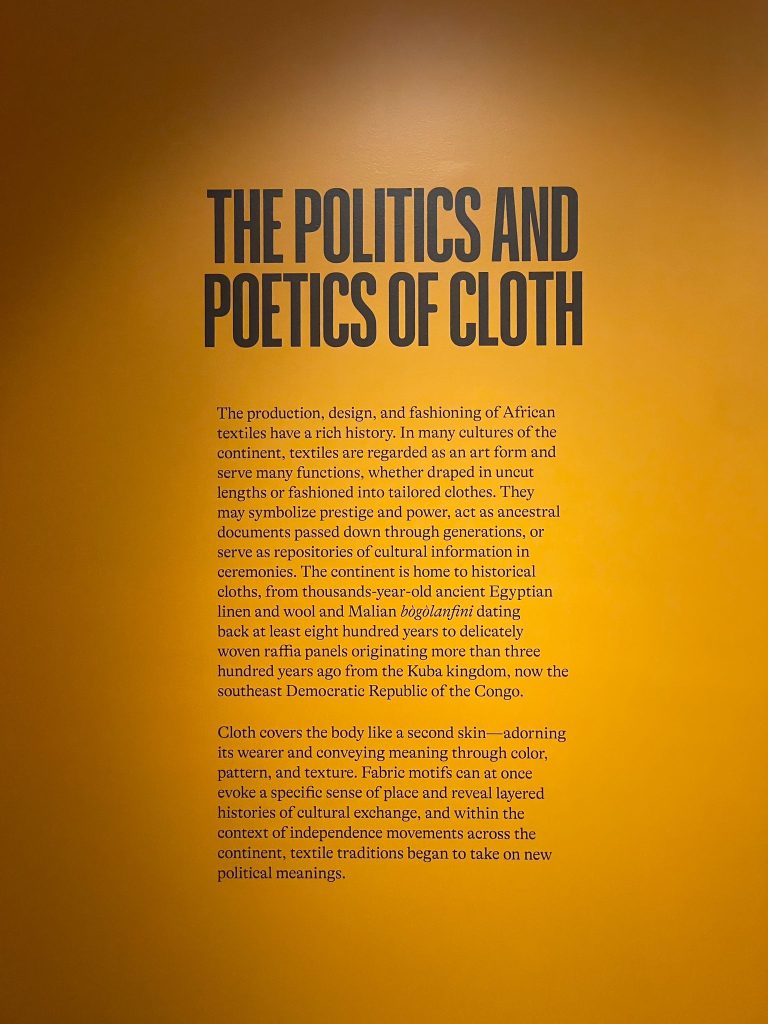
Colonialism and the global slave trade brought new influences to African fashion. European styles began to merge with traditional African clothing, giving rise to new forms of dress. Despite these external influences, African fashion has always retained its unique identity and symbolism.
African fashion is characterized by bold and vibrant prints, intricate beadwork, and a celebration of traditional craftsmanship. Ankara and Kitenge fabrics, characterized by their bold and colorful patterns, are especially popular and have found their way into the collections of major fashion houses.
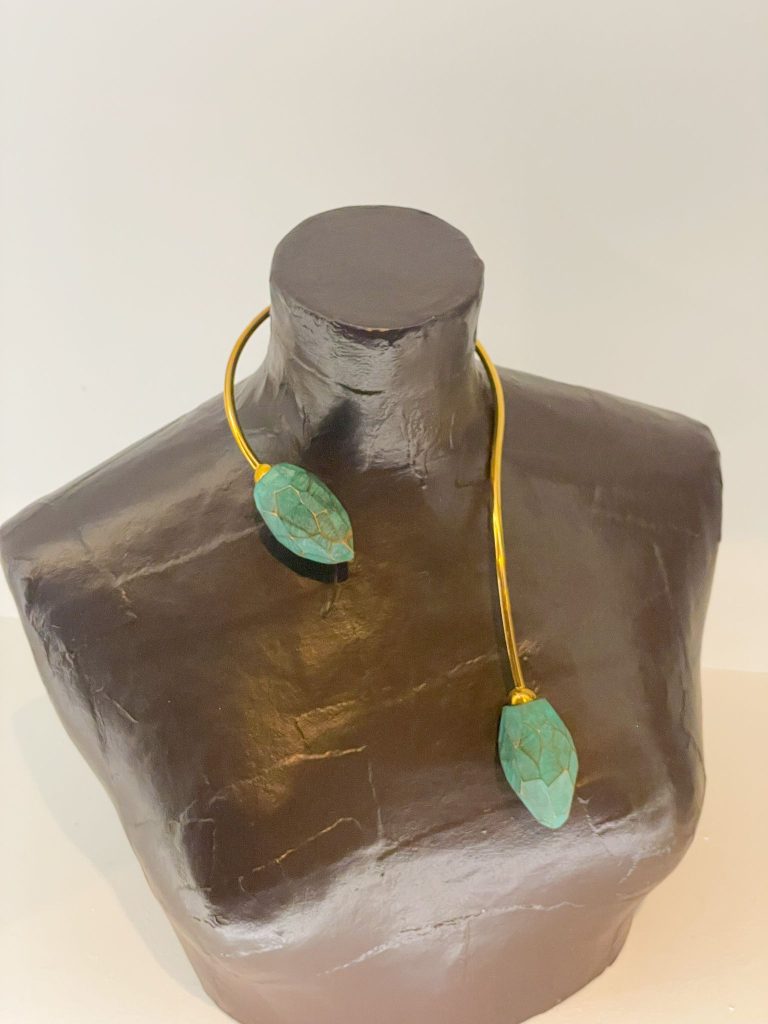
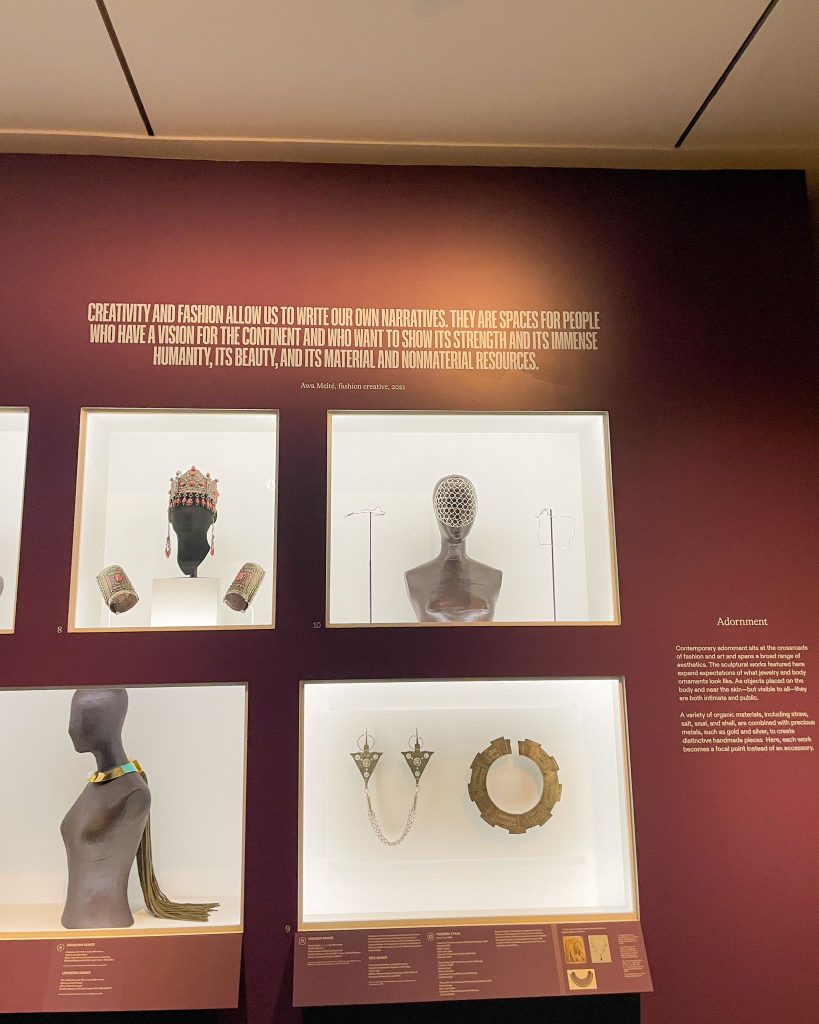
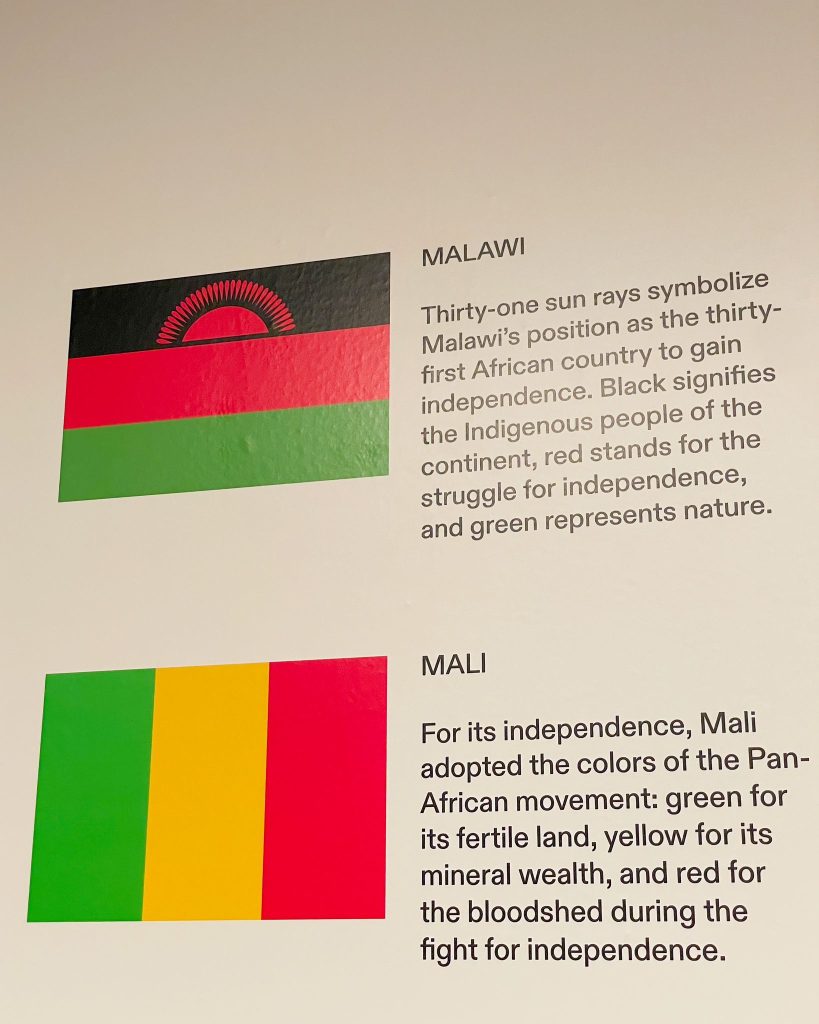
African fashion is not just about clothing; it encompasses accessories, footwear, and jewelry. The intricate beadwork of the Maasai, for example, has inspired jewelry designers worldwide.
African fashion is more than just clothing; it is a form of cultural expression. Each design, color, and pattern tells a story. Traditional attire often signifies a person’s age, marital status, and social standing, making it a powerful symbol of identity and heritage.
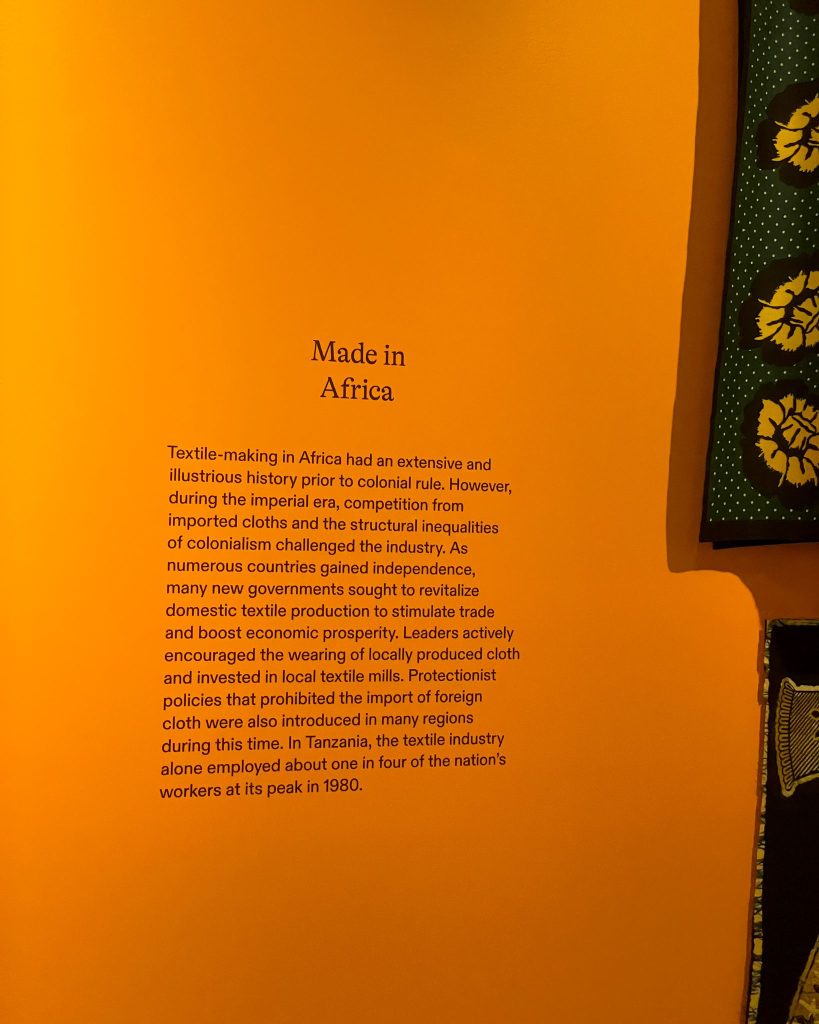
Many African designers are also dedicated to sustainability and ethical fashion practices. They source materials locally, employ skilled artisans, and promote fair trade. This commitment to ethical fashion aligns with global trends and reinforces the idea that fashion can be a force for positive change.
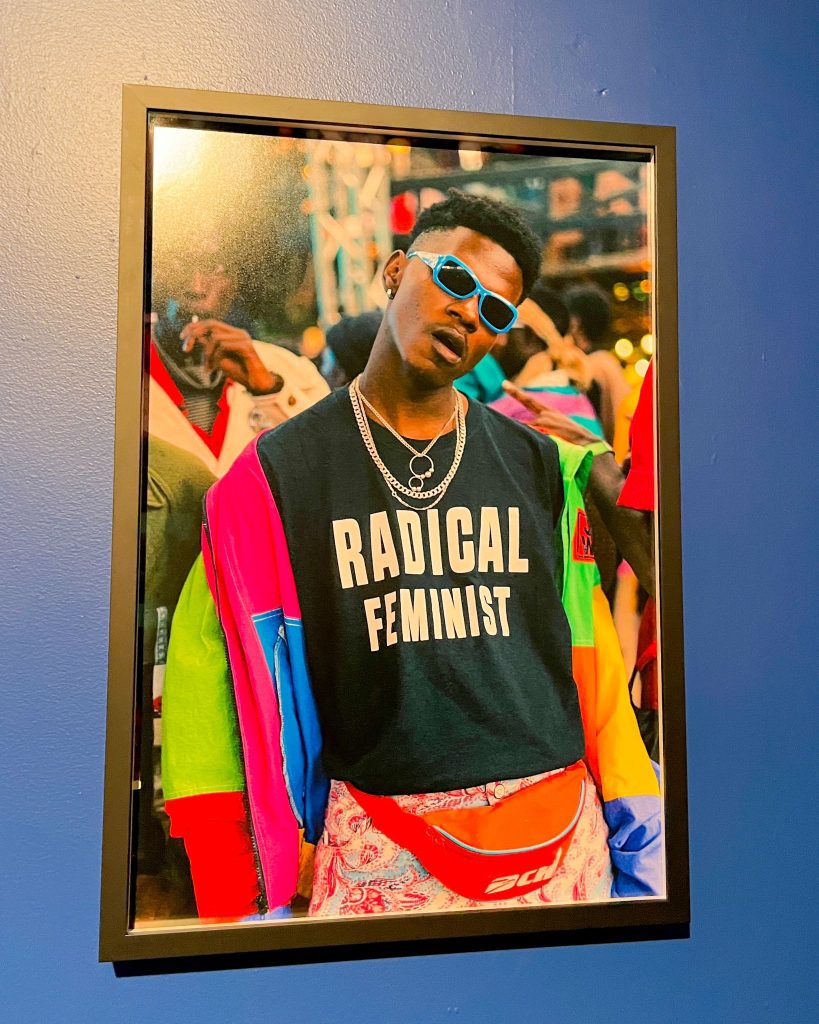
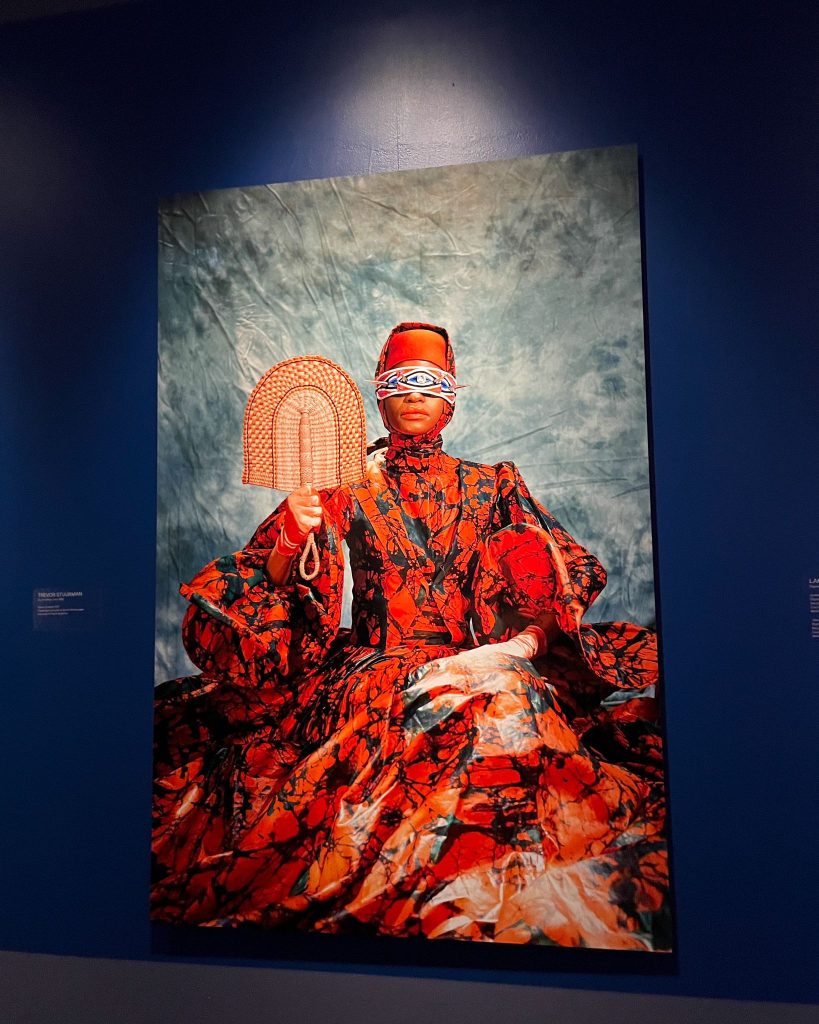
Showcasing a dazzling array of garments alongside music, visual art, and much more, Africa Fashion celebrates the ingenuity and global impact of African fashions from the 1950s to today. Works by iconic designers and artists illuminate fashion’s pivotal role in Africa’s cultural renaissance, which laid the foundation for an ongoing fashion revolution.
The exhibition is accompanied by a dedicated catalogue, published by V&A Publishing.
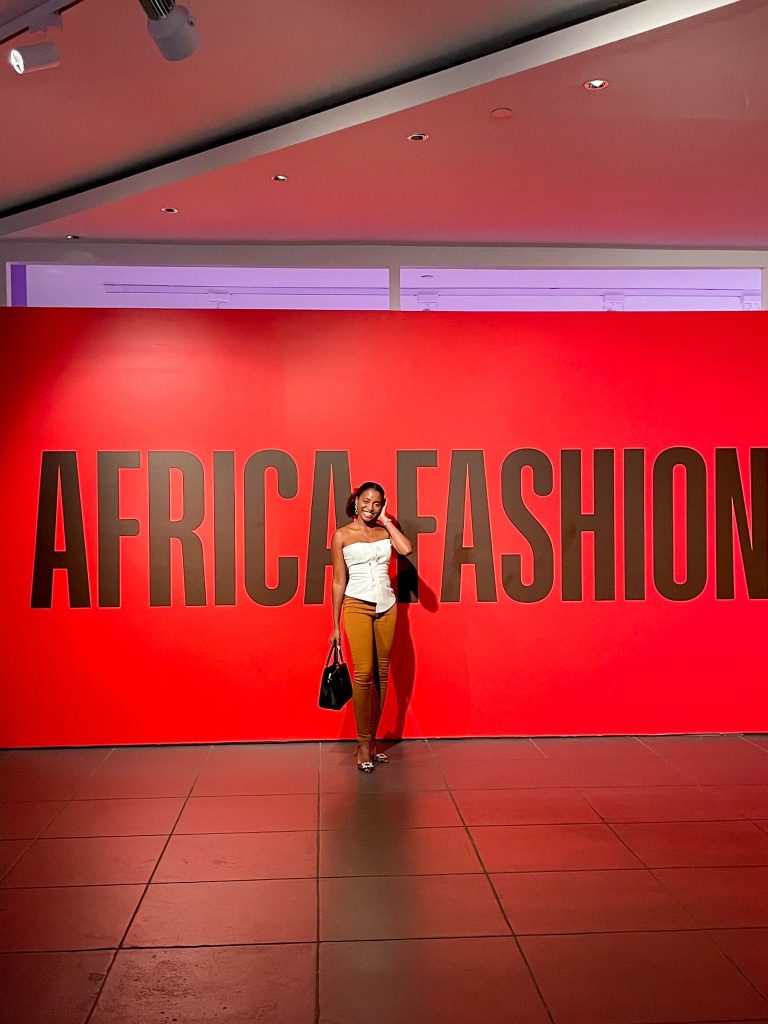
In my life, I have had a love and hate relationship with fashion. I have always identified more with ‘style’ than I did with Fashion. I think style is more self-expression, while fashion is in fact the art of making clothing. The capitalism has taken so much from that art, changing a beautiful thing into a marketing gimmick – something which quickly turns to classism when met with a people without identity.
***
When you enter the Africa Fashion exhibition in the Brooklyn museum, you are met by a huge red mural with the words “Africa Fashion” – a reminder we are taking up space in here. The exhibit spans the entire floor, with varying sections and cultures from different countries. On the walls are stories, about history, about culture, about music, about fashion.
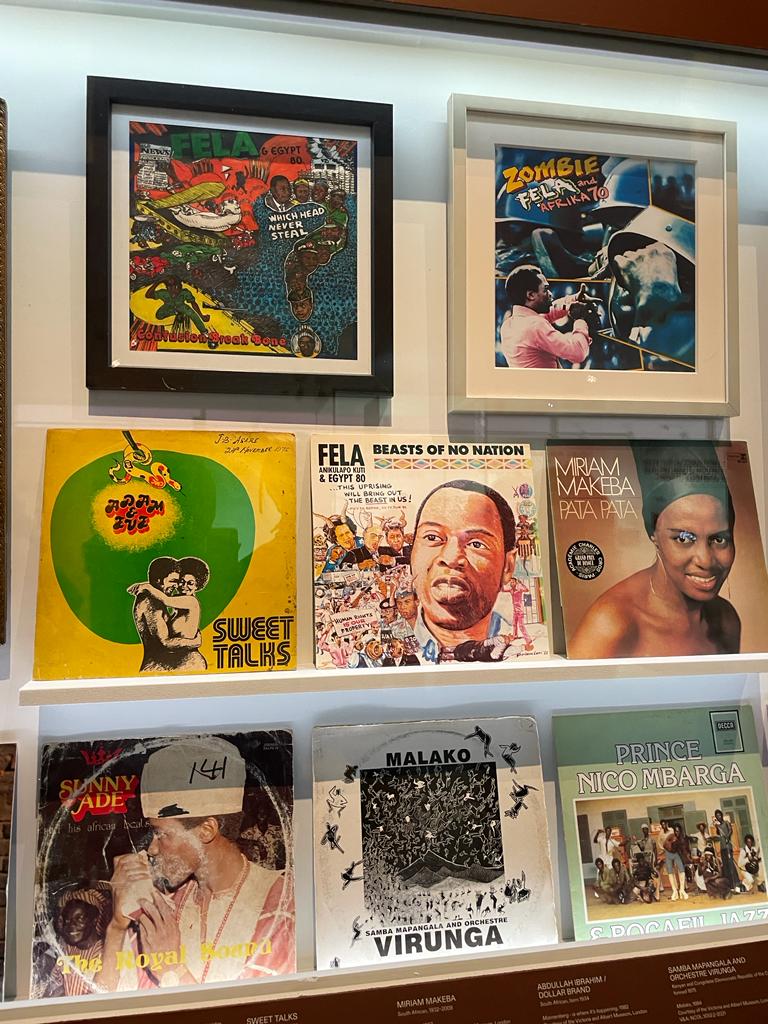
This transitions into statement pieces… pieces of the kente and kitenge clothing – outfits I am certain my mothers, aunties, grandmothers and maybe even myself would wear. My eyes first landed on a white dress – what looks to be a wedding gown, and Chalenge makes a snide comment about how we would not wish for his Africa bride to wear a white gown.
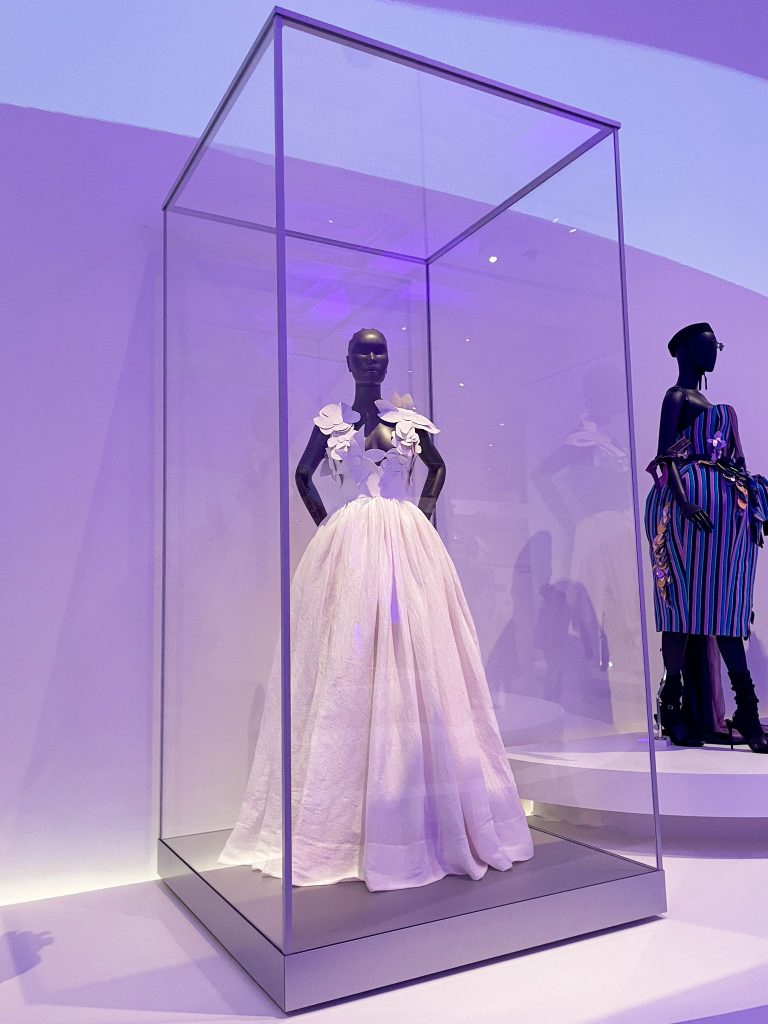
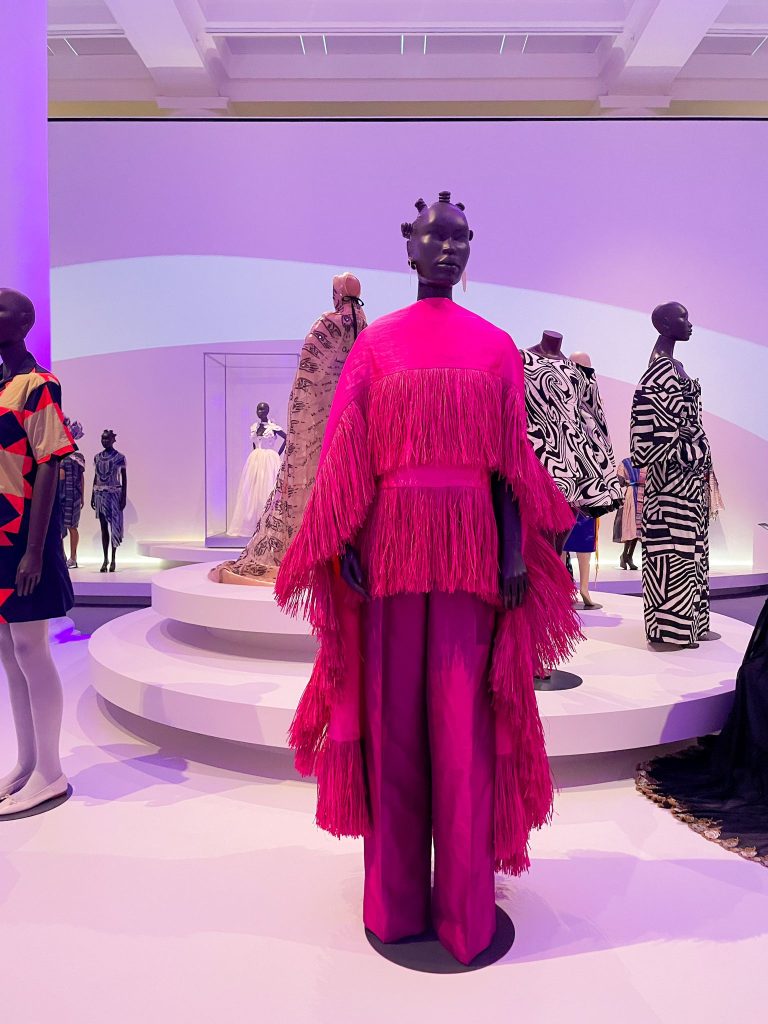
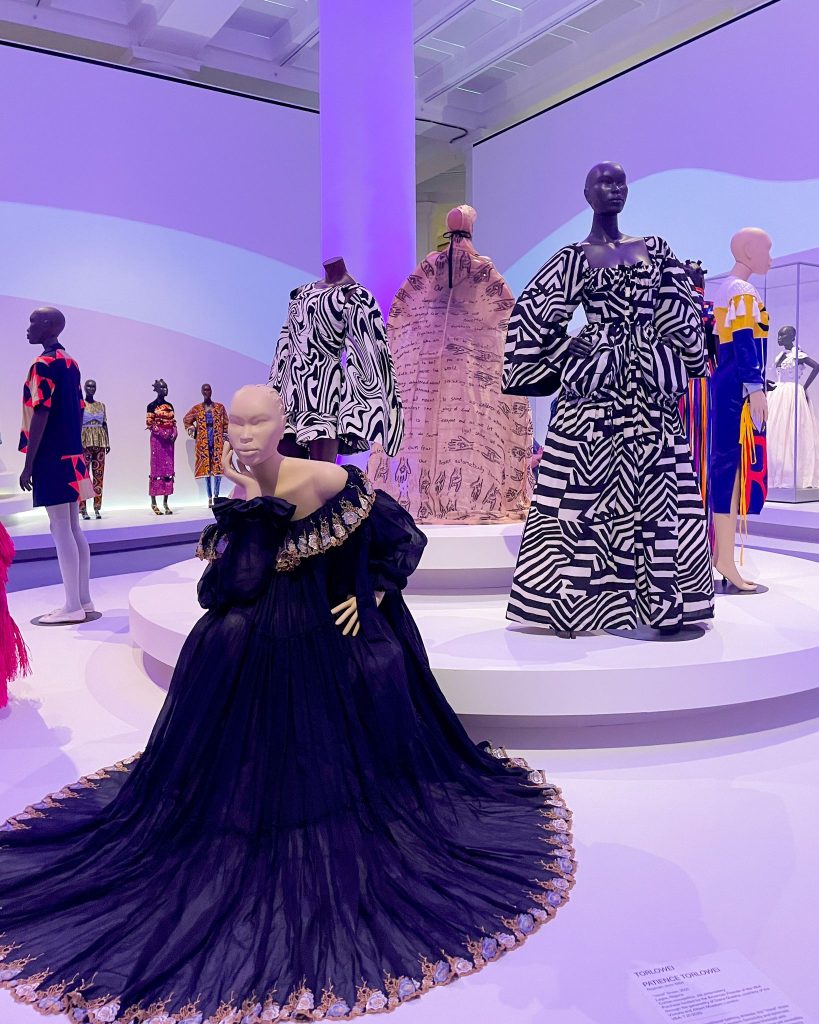
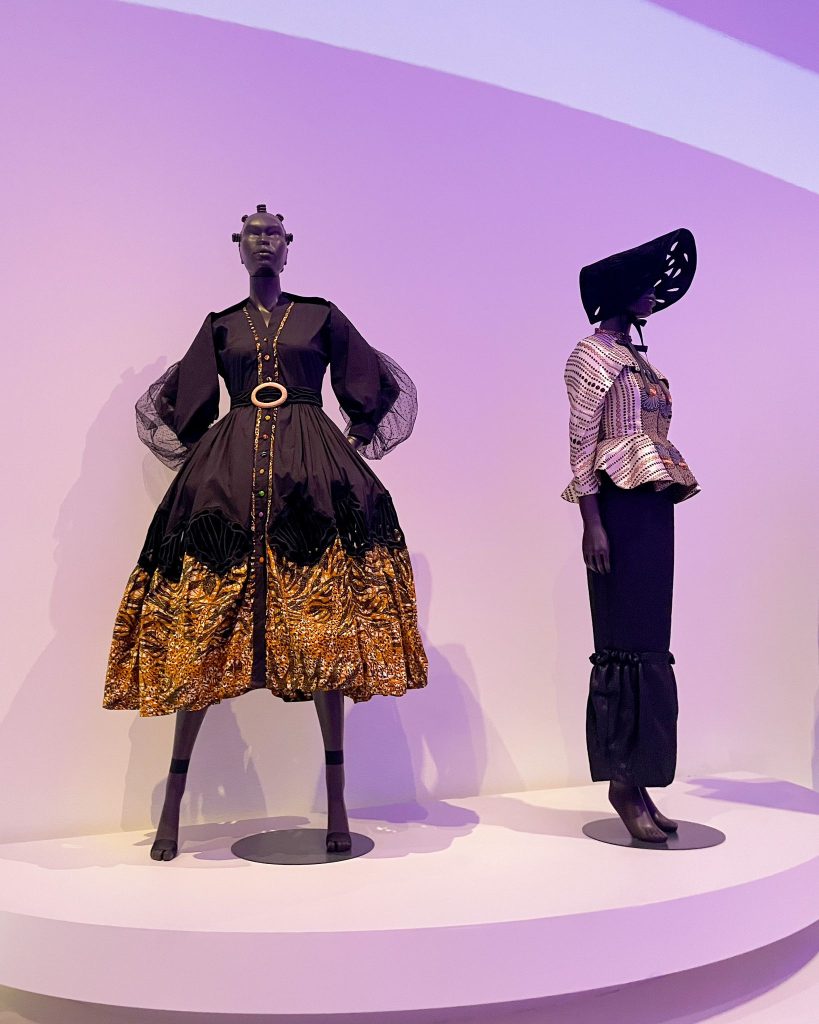
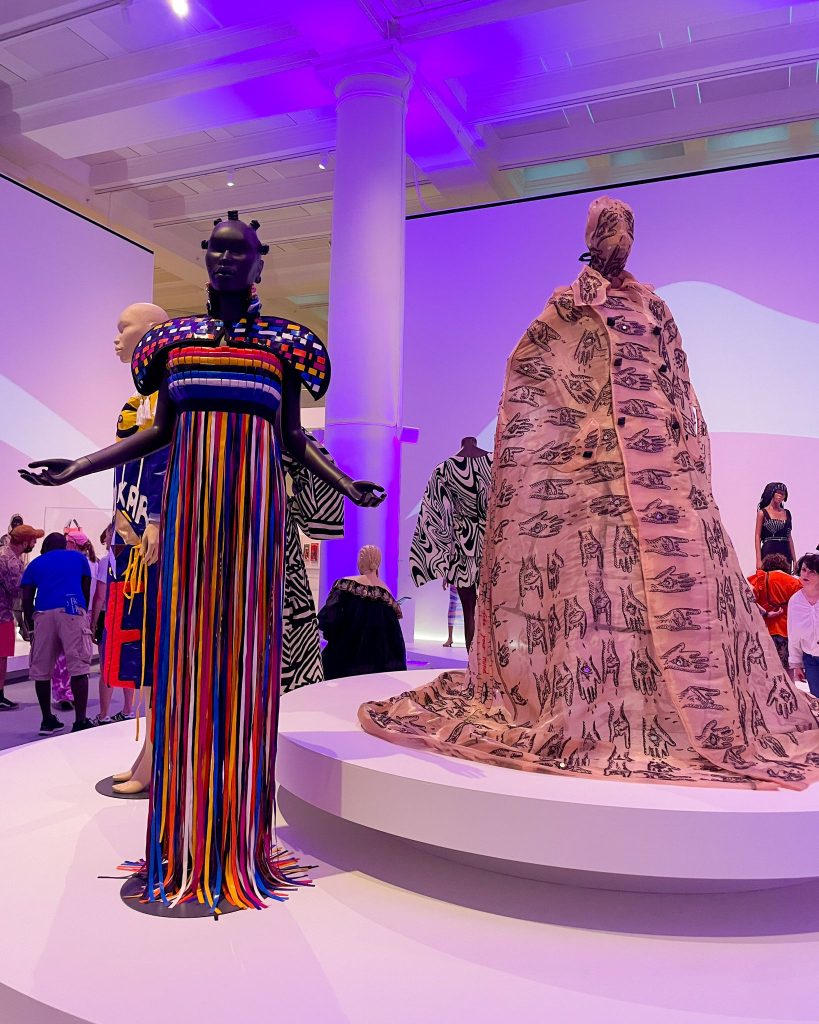
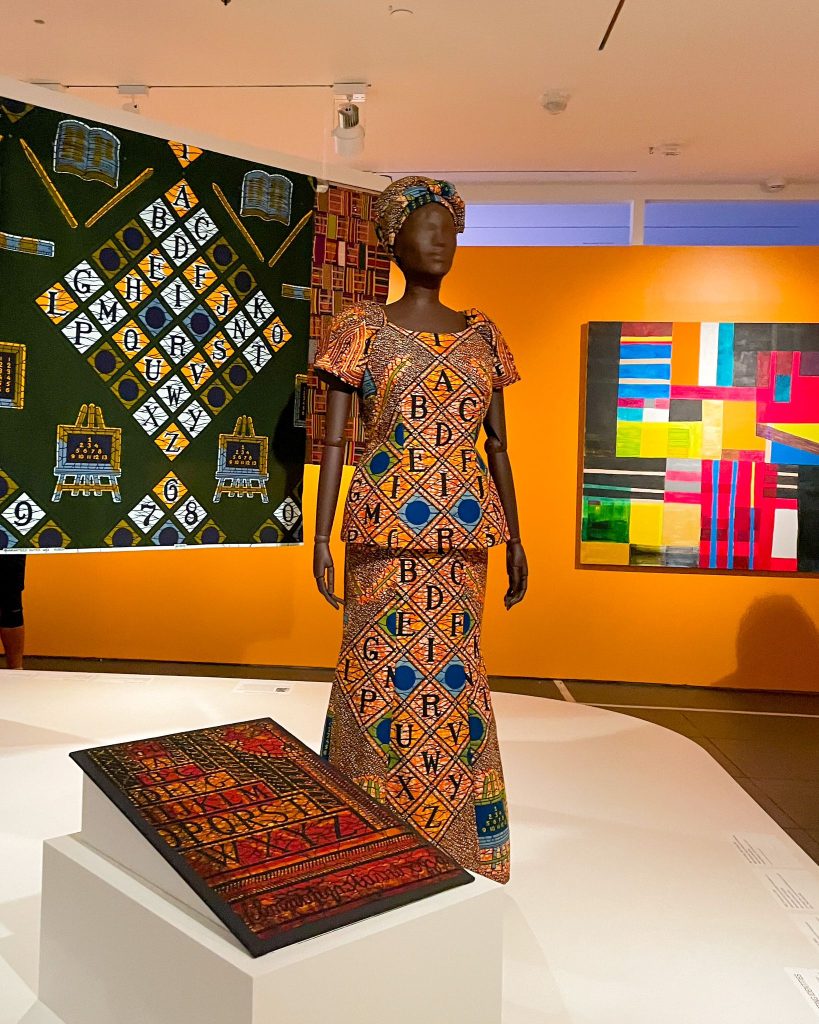

The mannequins will catch your eye – they are intentional, art in themselves. Each of them strikes a different pose, and the bulk of them are either bald-headed or rock bantu knots. The faces of the mannequins too (even the ones with pale skin) embody African features, something which was most certainly not by chance. This is Africa Fashion.
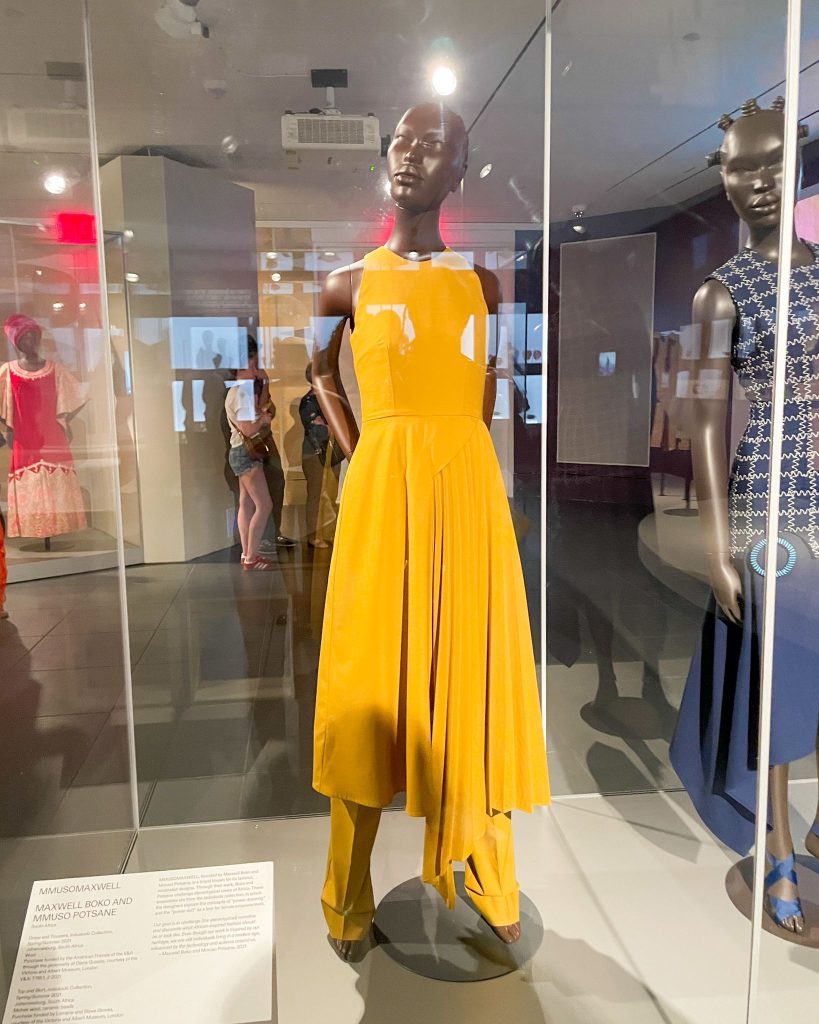
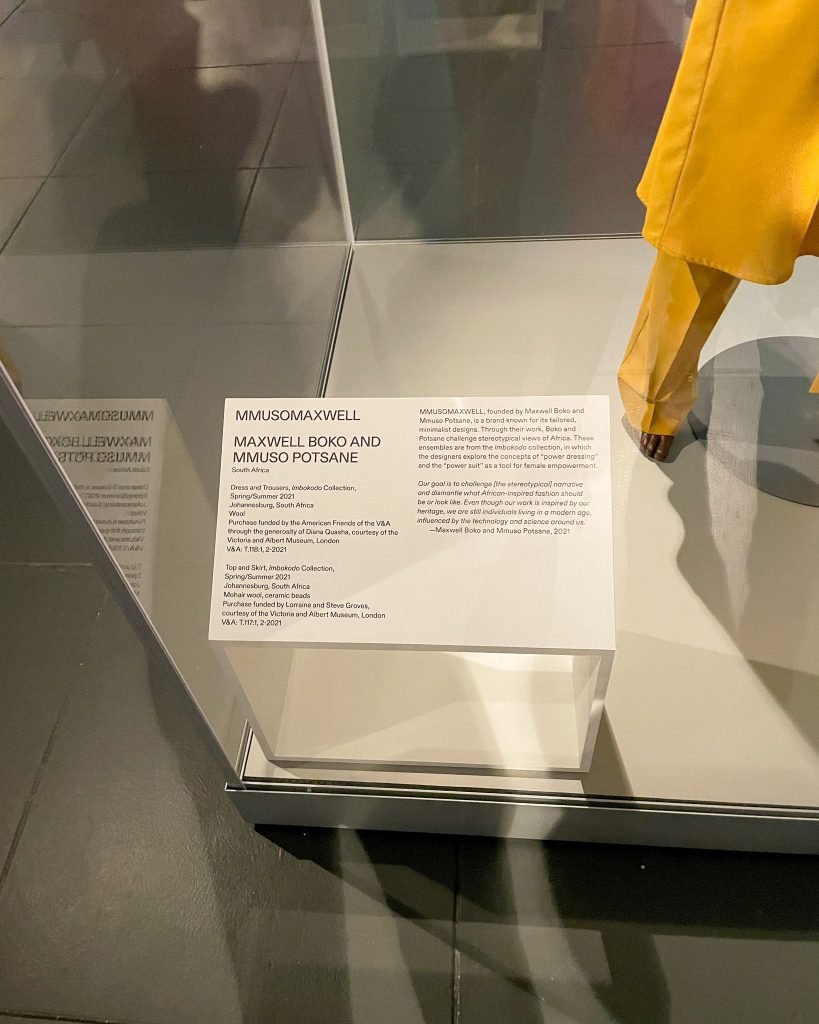
And my eyes, they wander everywhere, but always land here – this outfit that embodies my style. A dress with pleat details, and a pair of pants, a few of my favorite things. I start thinking of how I can own something like this, and I started thinking of how I can close the gap between creators like these, and a buyer like myself. I started thinking again of Tailored Africa, and why I created it.
I fell in love with so many pieces, but more importantly the stories of the pieces – the history they embodied. For a brief moment there, I was home.
All my love,
Connect with me on social media. Let’s stay in touch.